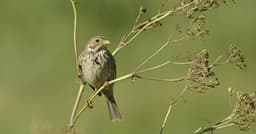Home / Environment / Drought Order Enforced as Sussex Reservoir Levels Plummet
Drought Order Enforced as Sussex Reservoir Levels Plummet
17 Oct
Summary
- Drought order in effect for parts of Sussex
- Ardingly Reservoir at only 27.6% capacity
- Hosepipe ban expanded, some exemptions withdrawn

As of October 17th, 2025, a drought order has come into force in parts of Sussex, England. The Environment Agency has changed the status of the areas around Haywards Heath and Eastbourne to drought, due to the critically low water levels at the Ardingly Reservoir.
The reservoir, which serves 228,000 customers in the region, is currently at only 27.6% of its total capacity. In response, the drought order has been implemented to "help conserve the remaining water stored within the reservoir and protect drinking water supplies in Sussex".
The existing hosepipe and sprinkler ban, which was imposed in July, will remain in place until the water supply is secured. Additionally, some exemptions to the ban, such as watering new lawns and food crops, are now being withdrawn starting on Friday.
The drought situation in Sussex adds to the ongoing water crisis affecting other parts of the country, including Yorkshire, Cumbria, and the West Midlands. The National Drought Group continues to monitor the situation and will meet again on October 30th to assess the next steps.




